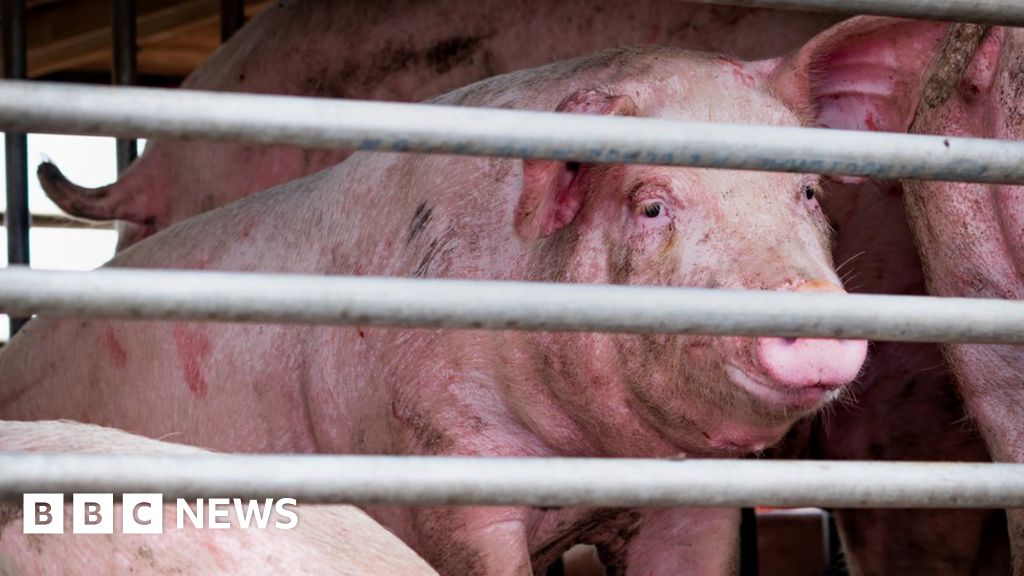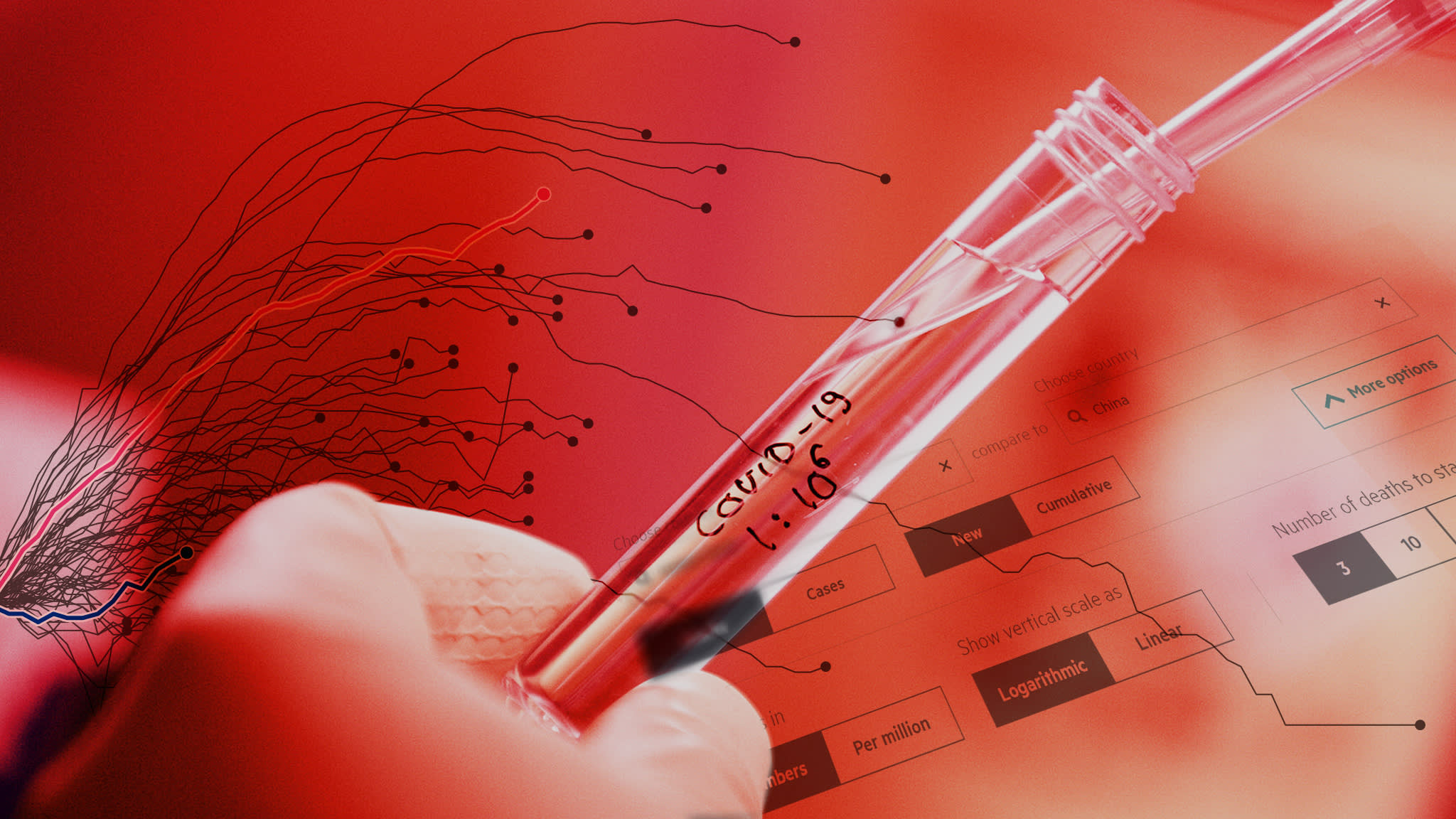30 nye tilfelle påvist. Stort sett ungdomar i 20-åra. Og no har sjenkinga og slåstinga starta. Det ser ut som mange ikkje greier å ha fridagar. Einmetersregelen skal gjelde framleis, men det funkar ikkje slik det gjorde før, tydelegvis.
Medisin og helse Corona
- Trådstarter Disqutabel
- Startdato
Diskusjonstråd Se tråd i gallerivisning
-
R
rr30629
Gjest
^Lurer på om dette er den samme gjennomtenkte og reflekterte ungdommen som går oss gamle en god gang og som vil ha vindmøller? En vet aldri....

Nye tall viser mest smitte blant folk i 20-årene
Da koronaviruset først kom til Norge var det flest folk i 50-årene som ble smittet. Nå tester flest unge positivt for korona. www.nrk.no
Hur fan skall han ha det Tegnell? Igår skyllde han på att WHO ikke ser på statistiken, han burde gjøre det selv også!
www.nrk.no
Hur fan skall han ha det Tegnell? Igår skyllde han på att WHO ikke ser på statistiken, han burde gjøre det selv også!

Nya siffrorna: Svenskar sköter sig bäst i Norden med resor
Svenska folket sköter sig bäst i Norden när det kommer till att inte resa inom landet. Siffror från Telia Company visar att svenskarna i snitt reste elva procent mindre förra veckan än vad vi gjorde i första veckan i februari. Motsvarande siffra för Danmark? En ökning med 19 procent.www.expressen.se
At svenskene reiser mindre er selvfølgelig fordi de har forstått alvoret. Når hele Europa ser på Sverige som et land som har vesentlig mer smitte enn alle andre så hjelper det ikke hva SR og Tegnell forteller. Smittetallene er voldsomt høye sett i forhold til innbyggertallet. Og det hjelper ikke at Tegnell prater om at nå tester de mange....- Ble medlem
- 19.09.2014
- Innlegg
- 22.192
- Antall liker
- 14.741
Utenlandske turister sniker seg over svenskegrensen til Norge
Utenlandske turister venter til riksgrensen fra Sverige til Norge blir ubemannet for så å kjøre inn til Lofoten. – Vi er oppriktig bekymret, sier Narvik-ordfører. www.vg.no
www.vg.no
- Ble medlem
- 19.09.2014
- Innlegg
- 22.192
- Antall liker
- 14.741
VG med et bra stykke journalistikk som,om det stemmer, burde korrigere oppfatningen mange - inkludert meg selv - har hatt om at det var regjeringen som tok beslutningen om å langt på vei stenge ned Norge. Det var det ikke. De visste ikke om det en gang dagen før. De tok ikke en gang den formelle beslutningen siden den myndigheten var delegert tidligere.
Slik var dramaet da Norge stengte ned
 www.vg.no
Det ser riktig ut, i den forstand at det er Helsedirektoratet som har beslutningsmyndigheten i henhold til smittevernloven.
www.vg.no
Det ser riktig ut, i den forstand at det er Helsedirektoratet som har beslutningsmyndigheten i henhold til smittevernloven.- Ble medlem
- 19.09.2014
- Innlegg
- 22.192
- Antall liker
- 14.741
Det er jo så, men ting ble, og blir spesielt nå i ettertid spunnet som at alle var enige over hele fjøla og det ble tatt en samstemt beslutning osv. Det er ikke spesielt mye som tyder på at det var det som faktisk skjedde om man skal tro reportasjen fra VG. og at FHI var hoppende uenige er i alle fall for meg skrikende opplagt selv om de nå i ettertid har gjort en del innsats for å fremstille det som at de også egentlig støttet dette. Det er det fint lite som tyder på.
Når det nå i ettertid - i alle fall enn så lenge - ser ut til å være riktig beslutning vil alle ha sin del av æren for det, mens den faktiske beslutningen ble tatt i byråkratiet uten spesielt mye rådføring med politisk ledelse, bare en sondering for om det var støtte for noe.
Interessant artikkel, som for meg er litt skremmende.Det er jo så, men ting ble, og blir spesielt nå i ettertid spunnet som at alle var enige over hele fjøla og det ble tatt en samstemt beslutning osv. Det er ikke spesielt mye som tyder på at det var det som faktisk skjedde om man skal tro reportasjen fra VG. og at FHI var hoppende uenige er i alle fall for meg skrikende opplagt selv om de nå i ettertid har gjort en del innsats for å fremstille det som at de også egentlig støttet dette. Det er det fint lite som tyder på.
Når det nå i ettertid - i alle fall enn så lenge - ser ut til å være riktig beslutning vil alle ha sin del av æren for det, mens den faktiske beslutningen ble tatt i byråkratiet uten spesielt mye rådføring med politisk ledelse, bare en sondering for om det var støtte for noe.
FHi som er Norges fagmyndighet på smittsomme sykdommer er ikke involvert. Helsedirektøren og Helseminsiteren har hver for seg listet opp noen tiltak på hver sine gule lapp og når disse stemmer noenlunde overens så kjører de på. Her burde man jo hatt timer på timer med lange møter hvor det ble lagt en skikkelig plan.
FHI hadde på dette tidspunktet allerede laget 3 rapporter om Coronaviruset, vi hadde beredskapslaner for influensaepedemier. Dette var en situasjon som varslet lang tid i forveien - så at nedstengingen av Norge ble bestemt med et par gule lapper i løpet av noen få timer hvor Helseminister og Helsedirektør faktisk ikke er kjent med hva sitt egen fagstab mener er jo mildt sagt sjokkerende.
"Senest sist vår foreslo opposisjonen på Stortinget å lage en nasjonal handlingsplan for et bedre samordnet smittevern utenfor sykehussektoren. Men regjeringspartiene sa nei. " https://www.vg.no/nyheter/innenriks/i/LAxj1x/foreslo-nasjonal-smittevernplan-fikk-nei-av-regjeringspartieneLykke til, håper det ikke blir for mye å gjøre for dere.
Det er imidlertid ingen grunn til å tro at hvor klar man ville vært i Norge avhenger av hvilken regjering som sitter. Pandemiberedskap har aldri noensinne vært en politisk sak eller hatt offentlighetens interesse så jeg vedder ganske mye på at tilgang på utstyr osv ville vært eksakt like dårlig uansett regjering siden det inntil nå ikke har eksistert politiske poeng å score der. Det er nok en grunn til at opposisjonen har holdt kjeft om dette.
Ikke gitt at de vill gjort det samme i regjering, men sannsynligvis.- Ble medlem
- 19.09.2014
- Innlegg
- 22.192
- Antall liker
- 14.741
Regjeringen var veldig ivrige på snakke om at det var de som hadde tatt beslutningen etter å ha mottatt faglige råd, men saken er altså at den faktiske beslutningen ble tatt av en byråkrat i Helsedirektoratet - direktør Bjørn Guldvog. For mesteparten av regjeringen var det en orienteringssak i ettertid - eksempelvis visste ikke utdanningsministeren at skolene skulle stenge før hun las det i avisen eller hvor det nå var.Interessant artikkel, som for meg er litt skremmende.
FHi som er Norges fagmyndighet på smittsomme sykdommer er ikke involvert. Helsedirektøren og Helseminsiteren har hver for seg listet opp noen tiltak på hver sine gule lapp og når disse stemmer noenlunde overens så kjører de på. Her burde man jo hatt timer på timer med lange møter hvor det ble lagt en skikkelig plan.
FHI hadde på dette tidspunktet allerede laget 3 rapporter om Coronaviruset, vi hadde beredskapslaner for influensaepedemier. Dette var en situasjon som varslet lang tid i forveien - så at nedstengingen av Norge ble bestemt med et par gule lapper i løpet av noen få timer hvor Helseminister og Helsedirektør faktisk ikke er kjent med hva sitt egen fagstab mener er jo mildt sagt sjokkerende.
Så kan man jo velge om man fortsatt vil skryte av politikerene i denne sammenheng, eller om det er det norske byråkratiet som er riktig adressat for denslags.
Alle visste omtrent like lite om corona da pandemien startet. Vitenskapelig tilnærming har resultert i fiasko i flere land, mens de som brukte sunn fornuft har klart seg mye bedre. At du er sjokkert vil jeg heller kalle prestisje.Interessant artikkel, som for meg er litt skremmende.
FHi som er Norges fagmyndighet på smittsomme sykdommer er ikke involvert. Helsedirektøren og Helseminsiteren har hver for seg listet opp noen tiltak på hver sine gule lapp og når disse stemmer noenlunde overens så kjører de på. Her burde man jo hatt timer på timer med lange møter hvor det ble lagt en skikkelig plan.
FHI hadde på dette tidspunktet allerede laget 3 rapporter om Coronaviruset, vi hadde beredskapslaner for influensaepedemier. Dette var en situasjon som varslet lang tid i forveien - så at nedstengingen av Norge ble bestemt med et par gule lapper i løpet av noen få timer hvor Helseminister og Helsedirektør faktisk ikke er kjent med hva sitt egen fagstab mener er jo mildt sagt sjokkerende.Det meldes om stadig flere smittede i Sverige, i dag er det 2.257 nye smittede. De kryper opp mot 10.000 nye tilfeller i uka. Søppelsekken med tomme øl- og brusbokser får ligge i boden en stund til- Ble medlem
- 19.09.2014
- Innlegg
- 22.192
- Antall liker
- 14.741
De har undersøkt hva folk gjør og tenker i Sverige

Stor majoritet har anpassat sitt beteende under pandemin — Folkhälsomyndigheten
Undersökningar som Folkhälsomyndigheten gjort under våren visar att över 80 procent av befolkningen anpassat sitt vardagsliv under pandemin för att minska risken för smittspridning.www.folkhalsomyndigheten.se
Resultaten visar bland annat att över 80 procent av befolkningen har anpassat vardagslivet på grund av coronaviruset. Under perioden maj-juni för mätningen uppger nästan nio av tio (86-87 procent) av de dessa att de hållit avstånd till andra både inomhus och utomhus. En stor andel uppger också att de undviker att resa med kollektiva färdmedel och att vistas på platser med mycket folk. Vidare uppger en majoritet (76 procent) att de har den information de behöver om myndigheternas hantering av coronaviruset.
Under våren har drygt en tredjedel av de som uppger att de anpassat sitt vardagsliv arbetat hemifrån, något som bland annat minskat trycket på kollektivtrafiken.
Undersökningen visar samtidigt att andelen personer som upplever oro för sin egen hälsa minskar, från 36 procent vecka 17 till 30 procent vecka 25- Ble medlem
- 19.09.2014
- Innlegg
- 22.192
- Antall liker
- 14.741
KrF benytter anledningen til å drive alkoholpolitikk fordekt som smittevernstiltak.

- Varslet katastrofe
Espen Andreas Hasle (KrF), slakter byrådet i Oslo. Han kaller byrådet dypt uansvarlig og mener de gambler med Oslo-folks helse. www.dagbladet.no
www.dagbladet.no
Teite svensker altså. Hadde de lest denne tråden ville de skjønt at de fleste nå er immune, smitten avtar og sommeren kan leves som normalt.De har undersøkt hva folk gjør og tenker i Sverige

Stor majoritet har anpassat sitt beteende under pandemin — Folkhälsomyndigheten
Undersökningar som Folkhälsomyndigheten gjort under våren visar att över 80 procent av befolkningen anpassat sitt vardagsliv under pandemin för att minska risken för smittspridning.www.folkhalsomyndigheten.se
Resultaten visar bland annat att över 80 procent av befolkningen har anpassat vardagslivet på grund av coronaviruset. Under perioden maj-juni för mätningen uppger nästan nio av tio (86-87 procent) av de dessa att de hållit avstånd till andra både inomhus och utomhus. En stor andel uppger också att de undviker att resa med kollektiva färdmedel och att vistas på platser med mycket folk. Vidare uppger en majoritet (76 procent) att de har den information de behöver om myndigheternas hantering av coronaviruset.
Under våren har drygt en tredjedel av de som uppger att de anpassat sitt vardagsliv arbetat hemifrån, något som bland annat minskat trycket på kollektivtrafiken.
Undersökningen visar samtidigt att andelen personer som upplever oro för sin egen hälsa minskar, från 36 procent vecka 17 till 30 procent vecka 25HHardingfele
Gjest
^Og de ville samlet inn penger til statuer i alle parker!- Ble medlem
- 19.09.2014
- Innlegg
- 22.192
- Antall liker
- 14.741
Uansett hva man måtte mene om den svenske tilnærmingen til dette sakskomplekset så har jeg stusset en del over oppfatningen om at det er fullstendig anarki og alt går sin vante gang i nabolandet. Kan jo skjønne at noen i land langt borte har den oppfatningen basert på mediadekningen av Sverige som "odd man out" på verdensbasis, men å tro det mens man sitter i Norge er og har vært noe merkelig.
Om man skal lete etter lassez-faire i den vestlige delen av verden er det mer nærliggende å se på enkelte delstater i USA. Det rapporteres nå om sprengte sykehus rundtomkring der, den situasjonen har strengt tatt svenskene ikke vært i så langt og det er heller ikke noe som tyder på at de kommer til å komme i den situasjonen. Toppen på de fleste kurvene i Sverige var for et par måneder siden med unntak av antall bekreftede smittede / dag, men det kommer som vi har vært inne på først og fremst av betydelig mer omfattende testing, ikke av at det er så mange flere smittede nå om dagen. Det er i alle fall ingen ting som tyder på det siste.Her har vi jaggu meg en pandemi til på gang.
A new strain of flu that has the potential to become pandemic has been identified in China by scientists.
Flu virus with 'pandemic potential' found in China
The new strain, scientists say, is carried by pigs but can infect humans and requires close monitoring. www.bbc.com
www.bbc.com
It emerged recently and is carried by pigs, but can infect humans, they say.- Ble medlem
- 19.09.2014
- Innlegg
- 22.192
- Antall liker
- 14.741
Noen som fikk med seg at VG rapporterte at fra 23 til 28. juni så økte antall innlagte på sykehus fra 12 til 22, mens det nå har fallt til 15 igjen?
Om vi derimot ser på rapporten fra FHI så har det fra 19. til og med 28, juni kun vært to nyinnleggelser ved norske sykehus. Hvor er det VG får tallene sine fra?Ny, svensk immunitetsstudie: – Grunn til forsiktig optimisme
Immunitet mot coronaviruset kan være høyere enn først antatt, ifølge en ny svensk studie. Men det er behov for mer data, ifølge forsker Gunnveig Grødeland. www.vg.no
www.vg.no
USA tømmer lagrene for coronamedisin
Flere stater i USA har mistet kontroll på smittesituasjonen. Nå kjøper myndighetene all produksjonen av coronamedsin tre måneder frem i tid. www.vg.no
www.vg.no
Godt med nære allierte som legger felleskapet til grunn...Covid 19 sprer seg i et fantastisk tempo nå og forskerne har sett på hvorfor.
Bl.a.
When the first coronavirus cases in Chicago appeared in January, they bore the same genetic signatures as a germ that emerged in China weeks before.
But as Egon Ozer, an infectious-disease specialist at the Northwestern University Feinberg School of Medicine, examined the genetic structure of virus samples from local patients, he noticed something different.
A change in the virus was appearing again and again. This mutation, associated with outbreaks in Europe and New York, eventually took over the city. By May, it was found in 95 percent of all the genomes Ozer sequenced.
At a glance, the mutation seemed trivial. About 1,300 amino acids serve as building blocks for a protein on the surface of the virus. In the mutant virus, the genetic instructions for just one of those amino acids — number 614 — switched in the new variant from a “D” (shorthand for aspartic acid) to a “G” (short for glycine).
But the location was significant, because the switch occurred in the part of the genome that codes for the all-important “spike protein” — the protruding structure that gives the coronavirus its crownlike profile and allows it to enter human cells the way a burglar picks a lock.
And its ubiquity is undeniable. Of the approximately 50,000 genomes of the new virus that researchers worldwide have uploaded to a shared database, about 70 percent carry the mutation, officially designated D614G but known more familiarly to scientists as “G.”
“G” hasn’t just dominated the outbreak in Chicago — it has taken over the world. Now scientists are racing to figure out what it means.
At least four laboratory experiments suggest that the mutation makes the virus more infectious, although none of that work has been peer-reviewed. Another unpublished study led by scientists at Los Alamos National Laboratory asserts that patients with the G variant actually have more virus in their bodies, making them more likely to spread it to others.
The mutation doesn’t appear to make people sicker, but a growing number of scientists worry that it has made the virus more contagious.
“The epidemiological study and our data together really explain why the [G variant’s] spread in Europe and the U.S. was really fast,” said Hyeryun Choe, a virologist at Scripps Research and lead author of an unpublished study on the G variant’s enhanced infectiousness in laboratory cell cultures. “This is not just accidental.”Et par tanker... vi har 13 døde siste måned. Om vi tar i og sier 20 døde i måneden, bruker vi over 20 år på å komme dit svenskene er i dag. Før den tid er pandemien forlengst over. Det skal eksplodere ganske betraktelig med smitte om vi noengang skal være i nærheten av å komme så ille ut. Sjansene for det kan ikke være store. Smitten er lokalisert til avgrensede områder. Dødeligheten synker. I tillegg åpner vi nå opp det aller meste og AS Norge kan tusle videre mens vi fortsetter å vaske hender og holde litt avstand. Men det må de vel i andre land også?HHardingfele
Gjest
Skremmende program fra BBC som dekker Covid i USA.

Business Daily - US states resist second lockdown - BBC Sounds
Coronavirus cases are on the rise in two dozen states, including Florida www.bbc.co.uk
www.bbc.co.uk
Hvis vi sier at «tiltak vi kan leve med i flere år» tilsvarer en Re rundt 1,0, så er det ganske stor forskjell på nokså konstante 2-3 smittede pr dag pr million innbyggere og like konstante 1-200 pr million. Hvis viruset først har fått etablere seg på det nivået over noe tid blir det vanskelig å komme ut av situasjonen nå.Et par tanker... vi har 13 døde siste måned. Om vi tar i og sier 20 døde i måneden, bruker vi over 20 år på å komme dit svenskene er i dag. Før den tid er pandemien forlengst over. Det skal eksplodere ganske betraktelig med smitte om vi noengang skal være i nærheten av å komme så ille ut. Sjansene for det kan ikke være store. Smitten er lokalisert til avgrensede områder. Dødeligheten synker. I tillegg åpner vi nå opp det aller meste og AS Norge kan tusle videre mens vi fortsetter å vaske hender og holde litt avstand. Men det må de vel i andre land også?
For alle de nordiske landene ser det ut til at kurvene har flatet ut de siste par ukene, men på veldig ulike nivåer.
Free to read: Coronavirus tracked: has the epidemic peaked near you?
Find any country or US state in the live-updating and customisable version of the FT’s Covid-19 trajectory graphsig.ft.com
Å? Jeg tror de fleste av oss kan leve med at Raymond strammer inn på skjenkereglene i Oslo hver gang det begynner å skli ut. Det er ikke så mye mer enn det som behøves for å holde dette på nåværende nivå, pluss sporing og beredskap på å slå ned eventuelle lokale utbrudd andre steder.- Ble medlem
- 19.09.2014
- Innlegg
- 22.192
- Antall liker
- 14.741
Er det egentlig noen spesiell grunn til at det skal komme en runde om høsten? Viruset ser ikke ut til å være spesielt opptatt av temperatur akkurat. Jeg stusser litt på at det snakkes om "neste bølge" rundomkring - det er vel ganske åpenbart at det fortsatt er den samme bølgen bare at man har tett seg slik at den ikke brer om seg. Det er jo ikke slik at det har mer eller mindre forsvunnet av seg selv dette.Spørs om hverdagen begynner igjen. Det kommer etter alt å dømme en ny runde COVID til høsten. Hva skjer da når de fleste allerede er lei alle reglene?Det er ingen annen grunn enn at dette vil fortsette til flokkimmunitet (vaksine/gjennomgått infeksjon/tilstrekkelig tiltak som gir R<1) er oppnådd. Vi føler jo at dette er over, mens det i realiteten er verre enn det noen gang har vært på verdensbasis. Er det noen som helst grunn til at dette ikke skal bluss opp igjen?- Ble medlem
- 19.09.2014
- Innlegg
- 22.192
- Antall liker
- 14.741
Jeg tror vel også det vil blusse opp på ny, men jeg synes bare det er litt merkelig å snakke om bølger, det er jo ymse tiltak som gjør at spredningen avtok, ikke at viruset stakk sin vei av seg selv for senere å komme tilbake.
Steng barene og lukk opp skolene, men med fjernundervisning på videregående og universitetsnivå der det er mulig, og så er vi nok pent under 1. Fotball kan ihvertfall jeg greie meg uten i ganske mange år.Vel, det er ingen kamper i idretten, ingen konserter, ingen publikum på fotballmkamper - nå er skoler og barnehager stengt. Og R er omtrent 1.
Hva skjer til høsten når hverdangen begynner igjen. -
Laster inn…
Diskusjonstråd Se tråd i gallerivisning
-
-
Laster inn…










